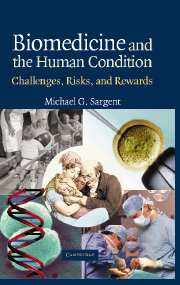Book contents
- Frontmatter
- Contents
- Preface
- 1 Challenges, Risks, and Rewards: Learning to Control Our Biological Fate
- 2 Learning to Breed Successfully
- 3 How Life is Handed On
- 4 Cells in Sickness and Health
- 5 Experiences in Utero Affect Later Life
- 6 Infection, Nutrition, and Poisons: Avoiding an Unhealthy Life
- 7 Signs of Ageing: When Renovation Slows
- 8 Cancer and the Body Plan: A Darwinian Struggle
- 9 Fighting Infection
- 10 Are Devastating Epidemics Still Possible?
- 11 Discovering Medicines: Infinite Variety through Chemistry
- 12 Protein Medicines from Gene Technology
- 13 Refurbishing the Body
- 14 Living with the Genetic Legacy
- 15 Epilogue: Signposts to “Wonderland”
- References
- Index
2 - Learning to Breed Successfully
Published online by Cambridge University Press: 06 August 2009
- Frontmatter
- Contents
- Preface
- 1 Challenges, Risks, and Rewards: Learning to Control Our Biological Fate
- 2 Learning to Breed Successfully
- 3 How Life is Handed On
- 4 Cells in Sickness and Health
- 5 Experiences in Utero Affect Later Life
- 6 Infection, Nutrition, and Poisons: Avoiding an Unhealthy Life
- 7 Signs of Ageing: When Renovation Slows
- 8 Cancer and the Body Plan: A Darwinian Struggle
- 9 Fighting Infection
- 10 Are Devastating Epidemics Still Possible?
- 11 Discovering Medicines: Infinite Variety through Chemistry
- 12 Protein Medicines from Gene Technology
- 13 Refurbishing the Body
- 14 Living with the Genetic Legacy
- 15 Epilogue: Signposts to “Wonderland”
- References
- Index
Summary
Man's earliest writings speak of the hope invested in offspring and in the generations to come, but “it is a truth, universally acknowledged” that reproduction, the most important enterprise people ever undertake, is fraught with difficulties. Women can have more than twenty babies in a lifetime, but populations have rarely grown at a rate that remotely reflects this possibility. On the contrary, the high mortality rate of infants and of their mothers was a painful truth at the heart of the history of the family. At the same time, unwanted pregnancy brought misery to people barely able to support a family and to their offspring. Unsatisfactory efforts to limit family size began in the late nineteenth century, marking the start of an era in which the birth control movement would gather momentum, culminating in the 1950s in the discovery of safe, effective hormonal contraception. In the midst of all this fecundity, the poignant regret of those who cannot have children could be heard, but daring schemes to assist reproduction have now made child bearing possible, at least for some of them. Control over reproduction has given us the means to breed successfully and to create possibilities for individuals that never before existed, but challenges remain.
“In Sorrow Thou Shalt Bring Forth Children”
Those who think that motherhood in prehistoric times was any easier than it is today should consider Eve's curse (Fig. 2.1).
- Type
- Chapter
- Information
- Biomedicine and the Human ConditionChallenges, Risks, and Rewards, pp. 20 - 44Publisher: Cambridge University PressPrint publication year: 2005



